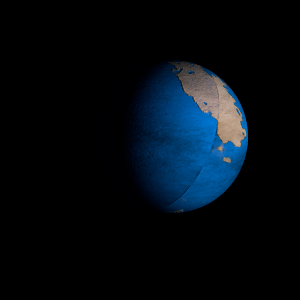|
|
Space Astro
|
Info for exoplanet "Rosagel Narke"
| Scientific (actual) data |
|---|
| Name | TOI-1235 b |
| Planet status | Confirmed |
| Planet mass | 0.0186 |
| Radius | 0.15113 |
| Orbital period | 3.44472 |
| Semi major axis | 0.03826 |
| Inclination | 88.9 |
| Discovered | 2020 |
| Updated | 2020-04-15 |
| Tzero tr | 2458680 |
| Impact parameter | 0.25 |
| K | 3.4 |
| Temperature (kelvin) | 775 |
| Publication | Published in a refereed paper |
| Detection type | Primary Transit |
| Mass measurement type | Radial Velocity |
| Radius measurement type | Primary Transit |
| Star name | TOI-1235 |
| Right ascension | 152.22° |
| Declination | 69.28° |
| Mag v | 11 |
| Star distance | 39.68 |
| Star metallicity | 0.33 |
| Star mass | 0.63 |
| Star radius | 0.619 |
| Star sp type | M0.5V |
| Star age | 0.8 |
| Star temperature | 3997 |
| Wikipedia article | TOI-1235 b |
Back
| |
| Fictional info (?) |
|---|
| Suggested name | Rosagel Narke |
| Planet type | Hot planet |
| It is the coldest planetary atmosphere in its solar system, with a minimum temperature of 45°K (-228°C), and has a complex, layered cloud structure with water vapor thought to make up the lowest clouds, and ozone the uppermost layer of clouds.
A prominent result is the "great white spot", a giant storm that is known to have existed for centuries since it was first observed by radar. The largest moon, Nerefar-tepede, has a diameter greater than that of the planet Jupiter. |
| Atmosphere | Ozone | 85% |
| Water vapor | 13% |
| Molecular hydrogen | 1.1% |
| Methane | 0.46% |
| Krypton | 0.31% |
| Xenon | 0.0028% |
| 2H2O | 0.0004% |
| Oxygen | 5.6E-5% |
| Atmospheric pressure | 11 bar |
 |
| Moon | Bestde-siarbauti | Small irregular rocky planetoid |
| Nerefar-tepede | Very small round crater-filled planetoid |
| Lene Arathe'di | Small slightly egg-shaped ice asteroid |
| Heor Patia | Huge irregular oceanic moon |
| Hethea'dacal | Medium-sized round ice moon |
| Dehyeri-medeuces | Small slightly egg-shaped rocky comet |
| Google search for Rosagel narke |
|
Website by Joachim Michaelis
|
|
|
|